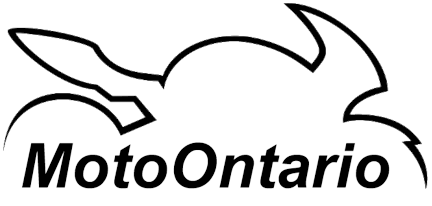1. Type of Motorcycle
- Cruisers: Thes low to the ground motorcycles are designed for comfort and ease of handling, making them popular for first-time riders. They are the easiest of all motorcycles to control, and the most forgiving when it comes to gear selection and rolling off and on the throttle. Beginners can start on cruisers up to 650cc.
- Standard/Naked: A good all-around bike, typically comfortable and easy to ride, with a more neutral riding position. Standard motorcycles are available in a wide range of sizes, however 200-400cc are the best for beginners. There are plenty of these available as used beginner bikes making them an affordable starting point.
- Sport Touring: Ideal for long rides, with more comfort features and luggage. These are best suited to experienced riders as they are usually larger, heavy and equipped with powerful engines.
- Dual-Sport/Adventure: Great if you want to try both on-road and off-road riding, but may require a bit more skill in off-road conditions. Dual sports up to 400cc are great for beginners, mid sizes start at 650cc are better left to experienced riders.
- Sportbike: Sportbikes require considerable experience -- not recommended for beginners.
- For beginners, it’s generally recommended to start with a smaller engine size (250cc to 400cc). A smaller engine gives you time to build confidence and learn how to handle the bike without feeling overwhelmed by power. Cruisers prioritize torque over horsepower making them easier and more forgiving when starting and accelerating.
- Too big: Larger bikes (600cc+) can be intimidating and challenging to control, especially if you're not used to the handling and power.
- Too small: Very small bikes (under 250cc) lack the power needed for sustained freeway riding.
- Seat height: Make sure you can flat-foot the bike while sitting on it. A bike that's too tall can make it harder to stop and balance, especially at low speeds.
- Handlebar reach: You should be able to reach the handlebars comfortably without straining.
- Weight: Consider the weight of the bike. If it’s too heavy, it could be difficult to maneuver, especially at low speeds or when stopping. You should feel comfortable handling the bike in various situations.
- New Bikes: You get the latest features, a warranty, and peace of mind. However, new bikes can be more expensive, and you’ll lose value as soon as you ride off the lot.
- Used Bikes: You can get a good deal on a used bike,and considering many new riders will accidentally drop a bike in their first year -- you're financial risk is reduced!
- Insurance premiums vary depending on the type of bike, engine size, and your riding history. Sportbikes, for example, may be 3x the insurance cost of a cruiser or dual sport.
- It’s a good idea to get insurance quotes for the specific bike you’re interested in to understand the cost before you buy the bike.
- Don’t forget to budget for the necessary safety gear, such as a DOT-approved helmet, gloves, jacket, pants, and boots. Protective gear is essential for your safety and comfort.
- Helmets: Full face helmets are recommended for beginners. While they may no look as cool on you new cruiser, road rash on your face isn't a cool look either. Make sure the helmet fits properly, if you've never done this before go to a motorcycle dealer for help. Your head is worth it.
- Jackets, Gloves, and Boots: Motorcycle jackets offer more protection, and gloves and boots are essential for the safety of your hands and feet. Check your local MArketplace or Kijiji -- good used gear is usually available at a fraction of the new price.
- Assess your current skill level. If you're a beginner, you might want to take a motorcycle safety course. These courses teach you proper riding techniques and safety and you'll usually save the course cost in your first year of insurance.
- Riding a motorcycle requires different skills than driving a car, such as balancing at low speeds, operating the clutch, and mastering the throttle and brake at the same time.
- Set a clear budget for both the bike and the gear. Don’t forget to factor in the cost of insurance, maintenance, and accessories.
- Avoid stretching your budget too thin. It’s better to start with something affordable and upgrade later as your skills improve.


